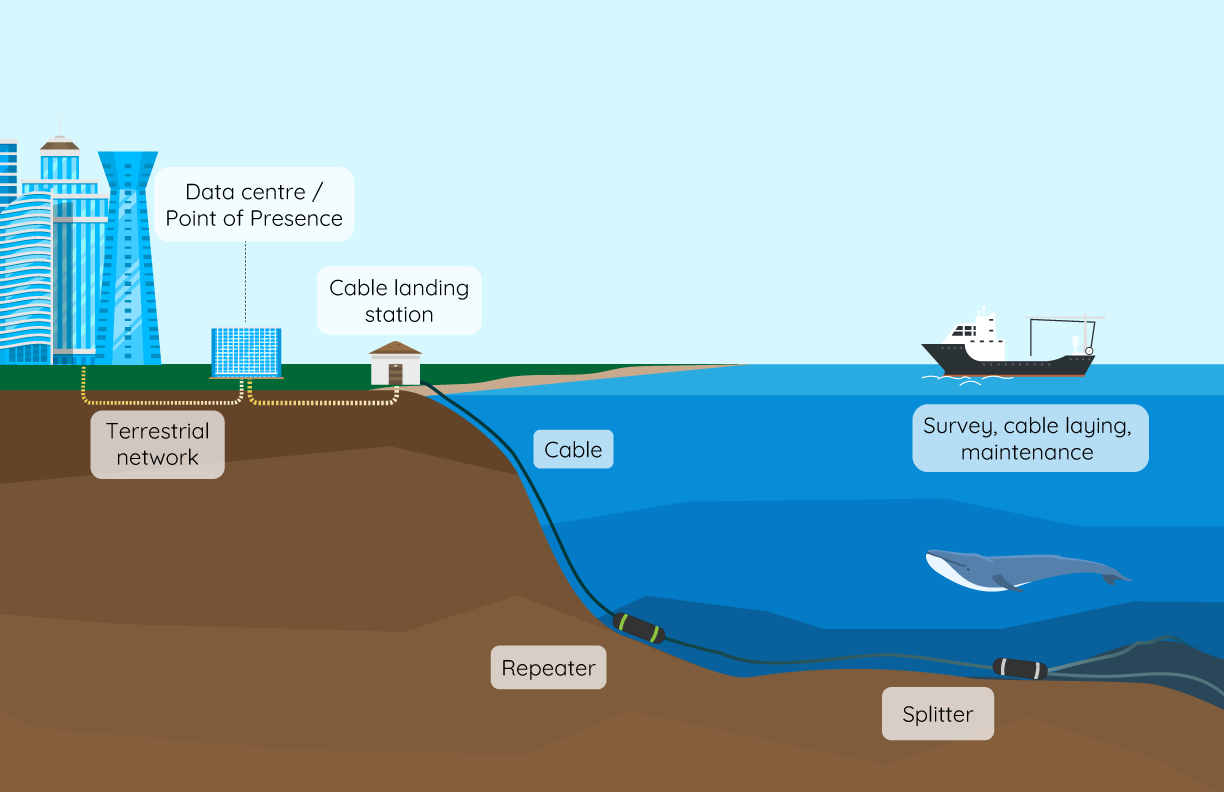According to new Global Trends research by Cullen International, submarine cables face diverse policy and regulatory landscapes worldwide, including on authorisation regimes, security and resilience requirements, and government incentives for deployment.
According to the benchmark:
- Only four of the surveyed jurisdictions require a specific licence by a telecoms authority to land a submarine cable and operate a cable landing station (CLS). Most jurisdictions follow a general telecoms authorisation regime but still demand multiple permits. When combined with licences and clearances from various authorities, the process to land a submarine cable and operate a CLS could take up to two years.
- In 11 surveyed jurisdictions, submarine cables receive stronger protection than regular telecoms assets, with mandatory security assessments and ownership screening in place. Ten jurisdictions established outage reporting obligations for submarine cables. Only six surveyed jurisdictions have implemented submarine cable protection zones.
- Only five surveyed jurisdictions offer incentives like funding or tax breaks to attract submarine cable investment within their territories. In turn, just three jurisdictions support initiatives for “sovereign” cable repair vessels.
 The research covered Australia, Brazil, China, Egypt, the EU, India, Indonesia, Japan, Kenya, Korea, Nigeria, Peru, Singapore, South Africa, the UK, and the US.
The research covered Australia, Brazil, China, Egypt, the EU, India, Indonesia, Japan, Kenya, Korea, Nigeria, Peru, Singapore, South Africa, the UK, and the US.
For more information and to access the benchmark, please click on “Access the full content” - or on “Request Access”, in case you are not subscribed to the Global Trends service.
more news
07 January 26
Average time to resolve a postal complaint in Europe varies from days to years
Our latest benchmark provides information on how end users' complaints are handled in the European postal sector, including operators' own complaint procedures, escalating procedures and statistics.
19 December 25
CSRD transposition: Belgium, Denmark, Finland and Slovenia transpose the “stop-the-clock” directive
Cullen International’s updated benchmark tracks the progress made by the 27 EU member states in transposing the CSRD and the related “stop-the-clock” directive.
19 December 25
Global trends in AI regulation
Our latest Global Trends benchmark compares policies and regulations on artificial intelligence (AI) across 14 jurisdictions around the world.